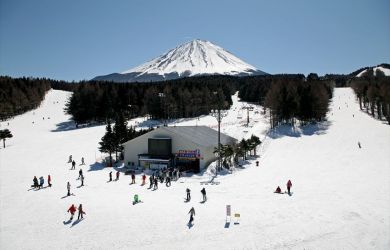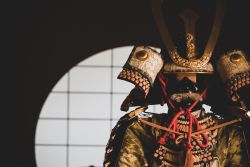
Originally published on metropolis.co.jp on March 2012

Culture can be divided by class into both high culture, typically for the few on top, and low (or pop) culture, typically for the masses. When someone claims to be “cultured,” they are taking a traditionally condescending position. When someone proudly states they are “down-to-earth,” they believe themselves among practical, almost cultureless people—but are being equally condescending in their own right. In fact, all culture, high and low, is equal in its perversity. That my son plays Mozart and reads comic books has equal meaning for me, even though for him, his Japanese baseball comic Major has higher cultural value than the old German folk dance he learned for his piano recital. It might be more exciting to look at suggestive pictures of pretty girls than to imagine dancing ones, but culture is all about perception; it is the monster we choose to make it.
The Japanese script for culture is composed of the kanji bun (文) meaning “literature” and ka (化) meaning “becoming.” This seems to signify that the best culture is that which has literary merit. In addition, ka also implies the phantasmagorical, and appears as ba in the word for monster, bakemono (literally “changing thing”). At the heart of Japanese culture are the demons and spirits of the Shinto religion. These monsters, often relegated as novelties, still manifest themselves in Japanese culture today. A good example is the recent revival of Shigeru Mizuki’s mid-20th century comic book and TV animation Ge Ge Ge no Kitaro, (“The Disgusting Demon Boy”) which has earlier roots in Hakaba no Kitaro (“Graveyard Demon Boy”), a 1930s paper-scroll play, or kamishibai performed on street corners by a storyteller.
Ge Ge Ge no Kitaro is both product of, and commentary on, culture. In the first of the six-book comic series, Kitaro’s mummified father describes the history of the Ghost Tribe, of which he is the last remaining member. A drawing depicting the Ghost Castle resembles the Tower of Babel before humanity was dispersed geographically and linguistically. From the beginning, the protagonist’s world is a parody of both Japanese and modern culture in more generic terms. Kitaro is a well-meaning rebel trying to repair human and demon relations, but is misunderstood by human society which fears him.
The series is really about humanity coming to grips with its self—looking in the mirror and recognizing itself for the monster it is. This holds true across national boundaries. The etymology of the western word “culture” has roots in the Latin cultus, the past participle of colere—the same source as the word “cult.” There is nothing more freakish or monstrous than fundamentalist religion, which gives birth to many demons. However, in today’s globalized culture, the predominant cult is not faith but capitalism. The prevailing hedonist idea dictates that not only does anything go, but also that everyone is required to enjoy themselves—or feel guilty otherwise. People worldwide chase this illusion, often leaving rural areas and moving to capitalist centers with towering architecture thrusting ever further towards the heavens; megacities like Tokyo with its Sky Tree.
Though culture, in all its perversity, is what we are as humans, we often forget its roots. In Guns, Germs and Steel, Jared Diamond identifies the enabler of the urban cultural center to be agriculture. Culture, our subjective existence, is made possible only after meeting our basic objective material needs, which might be why the kanji ka is made up of radicals meaning “man/human being” and “spoon;” and why the Latin colere means “to till” or “cultivate.” Indeed, a common metaphor for pen and word is plow and furrow.
In my reading of cultural critic Slavoj Zizek, the cultured captains of capitalism intend the masses to give up genuine material security for the allusion of conspicuous gratification. Perhaps the most conspicuous example is the famous Enumclaw horse sex case, when Boeing engineer Kenneth Pinyan died in 2005 from a punctured colon after fraternizing with a male horse (a plow horse?). And more recently on a societal level in Japan, the truth of modern bunka is being debunked following the Fukushima nuclear accident, in which the endless energy source for capitalism’s extravagance has resulted in radioactive poisoning of food sources and the abandonment of homes, businesses, schools, shrines, and other community centers.
As culture unravels, perhaps the bakemono are resurrecting to roam the evacuation zone along with the feral ostriches. Fukushima is the telling becoming of our consumerist culture, in which we can have anything we want except a clean environment, safe food, green spaces—all that is necessary for human life, and thus any culture whatsoever.
Have something to say about this story? Share your comments below.







